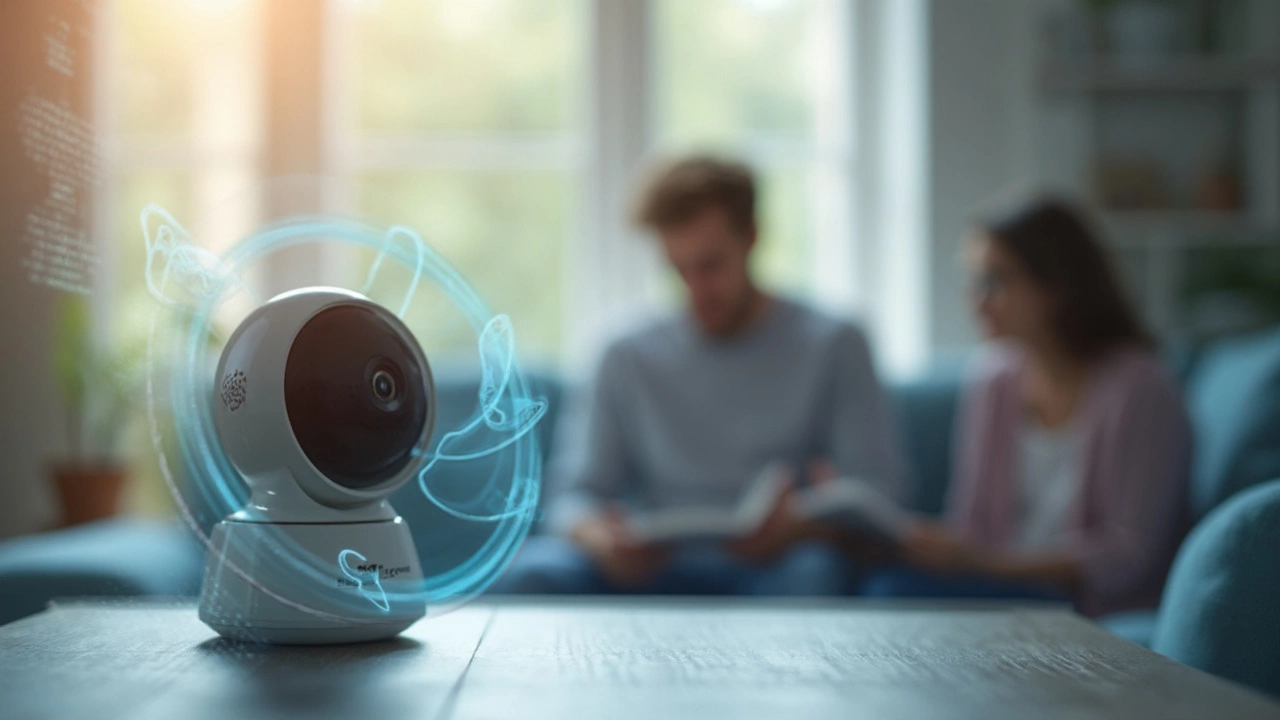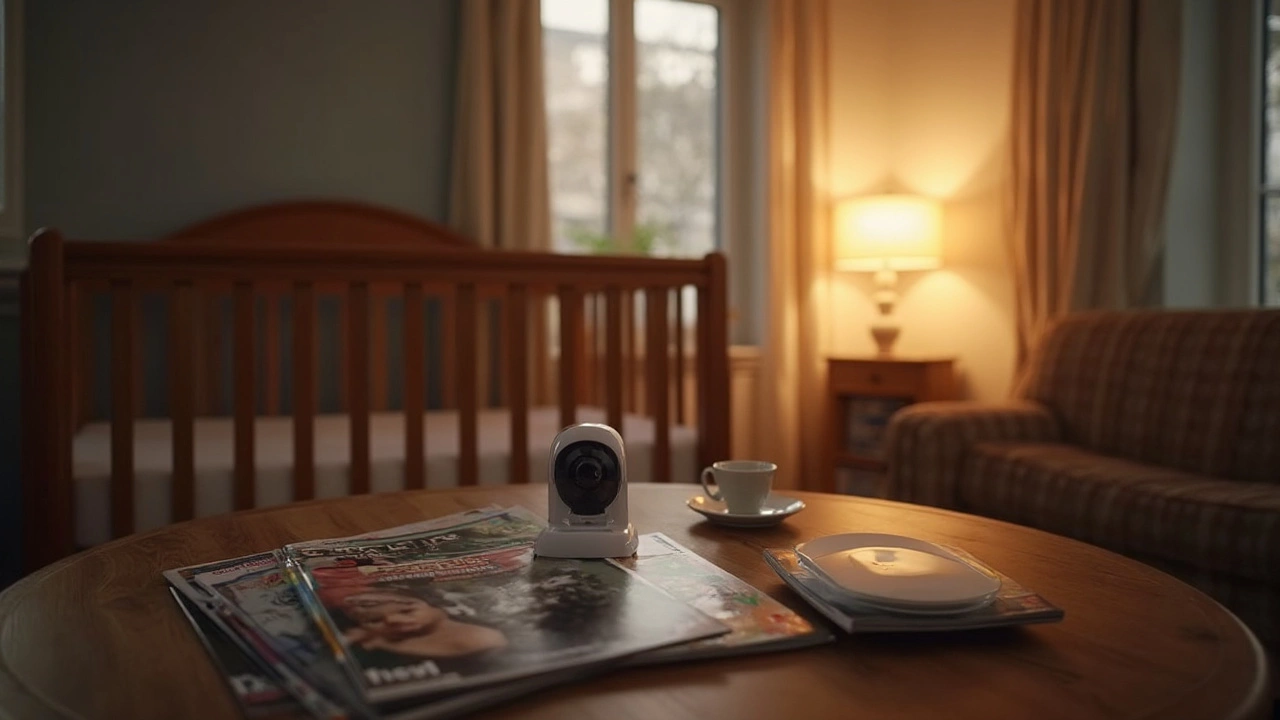Hackers snooping on your baby monitor? Sadly, that’s not just a bad movie plot. A few years back, some parents in Houston woke up to a stranger’s voice coming from their daughter’s WiFi-based nursery camera. The guy was yelling at their baby, turning the camera on its own. True story. Ever since, parents are asking: are non WiFi baby monitors really safer, or are we just swapping one pile of problems for another?
How Non WiFi Baby Monitors Actually Work
Let’s get real about the tech. Non WiFi baby monitors use radio frequencies—like walkie-talkies for naps. The most common types are analog and digital (often called DECT). No WiFi, no cloud connection, zero internet—just a direct transmission from the baby’s room to your receiver. They operate somewhere between 1.8 and 2.4 GHz, depending on the model. Some have video, others only sound. The signal range is usually 300 to 1,000 feet — as long as you’re not living in a steel bunker. The big catch: you can’t check in from the office or the grocery store.
Remember the days when baby monitors looked like oversized walkie-talkies? They haven’t changed much, and for once, that’s a feature not a bug. Since there’s no connection to your phone or network, a non WiFi baby monitor is a closed system. No hacking via the web. If someone wants to eavesdrop, they’d have to be literally parked outside your house with specialized gear. Not impossible, but a lot less likely than a dude in another country brute-forcing your WiFi password and dropping in on your 2 a.m. diaper change.
In practical use, I’ve noticed some baby monitors will blip out if you have tons of walls or interference from microwaves, wireless phones, or even your neighbor’s (overkill) entertainment system. If you’re in a big apartment or house, check the rated indoor range. It’s a bummer when the monitor craps out in your kitchen just as someone wakes up from a nap.
The Real Security Risks: Hacking and Privacy Concerns
If you’ve heard stories about baby monitors being hacked—well, they’re mostly true, and it’s almost always a WiFi baby monitor. The internet connection is the weak link. Even big-name brands have been caught with their digital pants down. US research published in 2020 found 61% of tested WiFi baby cameras had serious security issues. Weak passwords, unencrypted data, outdated firmware—all ways hackers can break in, sometimes undetected for months. One mom in Minnesota found out when a hacker started blasting out creepy lullabies in the middle of the night. No one needs that at 3 a.m.
But here’s some straight talk: traditional non WiFi baby monitors can be intercepted, too. The difference is, someone’d have to be close—like on your property close—and have the right radio gear to catch the signal. Digital DECT and FHSS (Frequency-Hopping Spread Spectrum) monitors scramble the audio or video. Most cheap analog models, though, are about as secure as shouting down a hallway. If security is top of mind, look for digital, encryption, and reviews that mention privacy.
There are also legal protections. In the EU, radio frequency baby monitors are regulated under EN 300 328 and must use specific frequencies to avoid interfering with emergency bands. In the US, the FCC limits their transmission power. It’s not perfect, but it keeps random tech tinkerers from going full voyeur.
Personal tip: If you’re really worried, do a sweep every few weeks. Walk around outside your home with the parent unit, see if any signal leaks. Paranoid? Maybe. But at least you’ll sleep better with the doors locked and the privacy shade down.

EMF Exposure: Signal Strength, Distance, and Baby’s Health
I used to put Nimbus—my cat—next to a monitor to see if EMFs freaked him out. (Spoiler: he slept right through it.) Still, if you’re worried about electromagnetic fields (EMFs) around your newborn, you’re not alone. Non WiFi baby monitors do emit EMFs, but way less than your phone, microwave, or WiFi router. Digital monitors using DECT tech can spike higher, but exposure drops off fast—the further from your baby, the weaker the signal. Keeping the monitor three feet (one meter) from the crib? That’s the sweet spot most pediatricians recommend.
The World Health Organization and national health agencies haven’t found clear evidence linking short-range EMFs at these levels to harm in babies. But if you’re the cautious type, choose a monitor with power-save or ‘eco’ mode. These only transmit when they detect sound, not constantly. No monitor at all? Many parents still do it, especially if bedrooms are close. (But then you’re relying on your own sleep senses—a system most parents will admit is full of bugs!)
If your monitor’s manual looks like it was designed in 1993, good news: low-tech usually means low signal strength and—you guessed it—less EMF. And skip hanging the parent unit around the baby’s neck. Yes, someone once asked that on a message board. Just…no. Mount the monitor safely on a shelf, not inside the crib.
What About Functionality: Trade-offs and Convenience vs Security
If you love asking Alexa to show you the nursery, non WiFi monitors will feel like driving a stick shift when you’re used to an EV. No remote access. No cloud recordings. No smart alerts or tracking graphs. Just audio and maybe video, delivered direct from baby to you—no middlemen, no cloud, no hacking risk from overseas. If your life isn’t run by smart home gadgets, you probably won’t mind.
But some trade-offs are real. Want to check on your baby while you’re at work, or send grandma a live feed? Non WiFi monitors won’t cut it. They also tend to have grainier video, smaller screens, and no way to play lullabies through your phone. But what they lack in wow factor, they make up in peace of mind. Most models have battery backup in case the power goes, and many support two-way talk—so you can still remind your toddler that monsters don’t live under the bed, in true walkie-talkie style.
If you need notifications when your baby moves, cries, or the temperature spikes, look for models with noise alerts and room temperature displays. High-end non WiFi options now offer night vision and pan/tilt cameras, but don’t expect cutting-edge AI. Sometimes simple is safer, especially when you just want to sleep through the night.
My advice: always test your monitor’s range the day you set it up. Carry the parent unit to your weirdest, farthest corner (garage, yard, laundry cave) and see if the signal drops. No tech is perfect, but you want a system that works when the microwave and the neighbor’s WiFi are both going full blast at midnight.

Choosing What’s Right for Your Family
So, does ditching WiFi actually make your baby monitor safer? For most homes, yes: it seriously cuts privacy risks. The sweet spot is a digital, encrypted non WiFi monitor—not the cheapest analog models, and not the over-connected cameras. Look for products with FHSS or DECT tech, and features like voice-activation, out-of-range alerts, and decent battery life.
Before buying, ask yourself what freaks you out more: someone hacking in from afar, or maybe missing a check-in because your monitor’s not cloud-connected. For new parents who want “set it and forget it” with total privacy, non WiFi baby monitors are hard to beat. If you want to watch your baby on your phone from anywhere, those internet-connected models are still there—just make absolutely certain you have strong passwords, enable two-factor authentication, and keep software updated.
I’ve tested more than a few gadgets alongside Nimbus (my furball sometimes acts like a test baby for alerts). Non WiFi monitors are boring in the best way. They just work, with almost no weird surprises or late-night hacking scares. Sure, peace of mind isn’t flashy, but at 2 a.m., that’s worth a lot. Before you buy, read reviews from real parents—not bots or influencers. And whatever you pick, please put a sticker over the camera when you’re not using it. Trust me, you’ll sleep easier.

